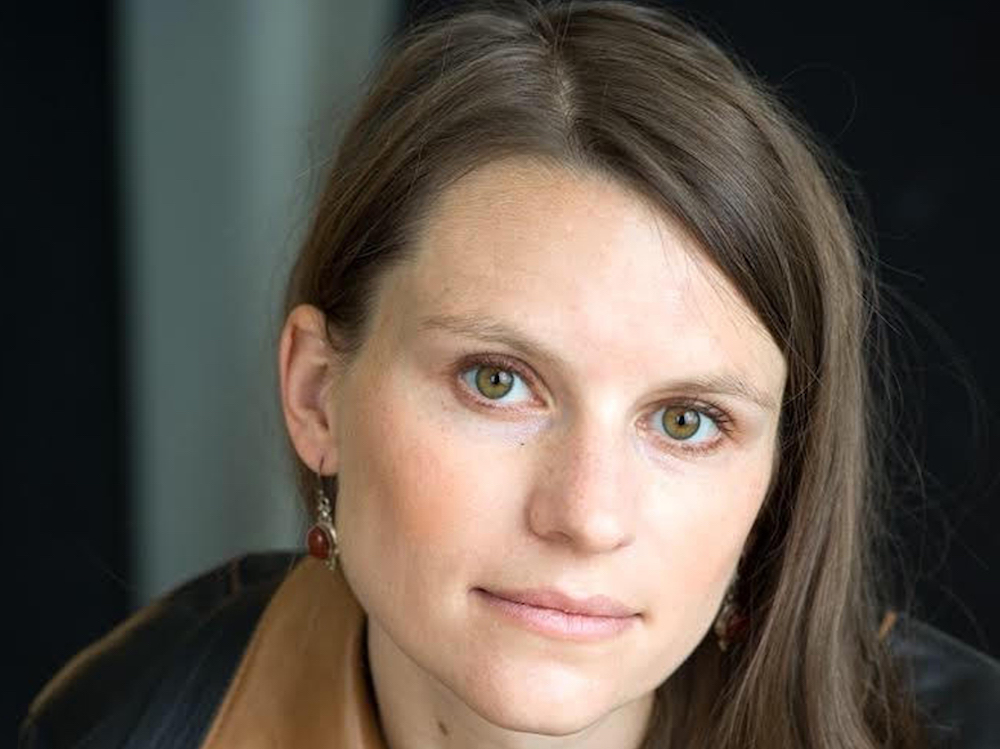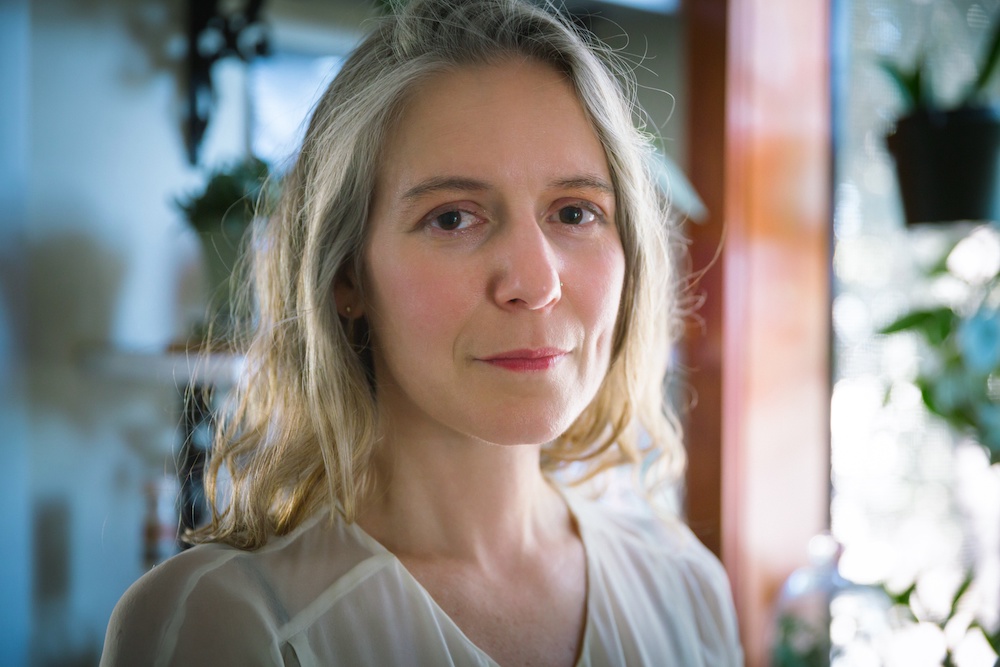Anyone who has googled their own name knows the curious thrill of watching the page populate with alternate identities. Percy, the protagonist of Jessi Jezewska Stevens’s debut novel, The Exhibition of Persephone Q (out next week), suddenly finds herself awash in that potent mix of familiarity and alienation. She indeed googles herself not long after receiving a new exhibition catalogue of photographs, taken by her ex-fiancé, of a naked woman with a hidden face. Percy feels certain the woman is her—she recognizes the apartment, the body—but she cannot prove it, and the more she insists, the less plausible it all starts to seem. Previously a person of apathy, Percy has long been satisfied to be taken through life by a slow-moving current as invisible to herself as it is to those around her. She discovers she is pregnant and keeps not mentioning it to her husband; she goes out for long walks at night, makes money in vaguely nondescript ways, and seems generally on the brink of disappearing from her own life. The arrival of the catalogue upends her complacency and sends her reeling into a quest of self-discovery and assertion amid the social landscape of post-9/11 New York. Stevens uses her wry perspective and lucent style to pose a deceptively simple question of personhood: How could you prove who you were? —Lauren Kane
It is an uncharitable position, but I confess: I was nervous about reading Marcial Gala’s The Black Cathedral, a 2012 novel whose English translation, the writer’s first, didn’t appear until this January. Polyphonic novels are tricky things, with as many pitfalls as they have voices, and of all the many challenges translators face, slang and informal language must rank among the stickiest. On both fronts, though, Gala’s book turns out to be a pleasant surprise: each voice is distinct and individualized, and although between the covers they push and pull against one another, once you close the book you realize he has been making them work together all along, building a structure much like the cathedral of the title. Anna Kushner, too, deserves a great deal of praise—there is nothing stilted or forced about the translation from the Spanish, and it shifts gracefully from register to register and character to character. I am grateful to both Gala and Kushner for this book, and if it’s not too presumptuous to impose, since it turns out that this is in fact part of a trilogy about the city of Cienfuegos—can I please ask for the rest? —Hasan Altaf
If the mark of a good novel is its ability to delicately rewire the reader’s brain, then Meng Jin has given us a very good novel in her debut, Little Gods. The central character, a gifted physicist named Su Lan, theorizes a universe that tends toward order, not chaos. A broken water glass can reassemble, spilled water flying back into it. What else is this but time moving backward? The fact that humans experience time differently does not make it impossible. Su Lan’s thought experiment turns slowly in the background, stretching our puny human preconceptions, as we move through a nonlinear account of her life in space-time, told by a neighbor, a husband, a friend, a daughter. What is order? In an early scene, Su Lan paints a rented room in a new city white from floor to ceiling, creating an impression of blank limitlessness. For her, the past—famine, poverty, dirt, village life—is chaos. Over and over, she seeks a clean start. She moves with her toddler, Liya, to America and, once there, from place to place, job to job, never rooting, retreating further and further into the open plane of her mind. Liya, on the other hand, craves the personal order of “a story so deep in the mud of history it could be passed as identity—as self!” This is the story that Meng Jin tells, and it’s a page-turner—but all the while it winks, reminding us that possible explanations in our universe are as varied as the beings who populate it. —Jane Breakell
Since its inception in the late fifties, West Side Story has courted controversy. The musical’s composer, Leonard Bernstein, made half-hearted efforts to “research” Puerto Rican culture at a gym in Brooklyn. Its lyricist, Stephen Sondheim, was more forthcoming about his lack of knowledge: “I can’t do this show,” he admitted. “I’ve never been that poor, and I’ve never even met a Puerto Rican.” Ivo van Hove’s new version, which had its opening at the Broadway Theatre last week, reimagines this complicated production. It is a cinematic spectacle, taking a cue from Daniel Fish’s adaptation of Oklahoma! by projecting live video footage onstage. The West Side Story camera operators are agile and athletic performers in their own right, bringing the audience into intimate conversations and revealing the queer desire that underpins the show. I was particularly excited about the recruitment of the Belgian choreographer Anne Teresa De Keersmaeker, whose avant-garde work is a far cry from traditional Broadway dance. Her aesthetic, however, seems to have been restrained for the New York audience. The choreography for “Cool” is most authentically De Keersmaeker, the dancers moving easily in a tight, militant formation and embodying the muted tension of the song. Van Hove’s bold vision seems, at times, not wholly realized. Yet this new production engages with the show’s powerful and problematic legacy in ways that others do not. —Elinor Hitt
At the center of Amina Cain’s Indelicacy is the question of work. Vitória, the main character, begins the novel as a cleaning woman in an unnamed art museum in an unnamed city; by the end, after her unexpected marriage to a rich man has dissolved, she is divorced and a writer. Fairy tale isn’t quite the right term to describe Cain’s prose; there is a fable-esque quality, yes, in its refusal to name places or dates, and she touches on familiar archetypes—Cinderella, the woman in need of a room of her own, the well-meaning but useless husband—with the ease of spinning straw into gold. Ultimately, though, this novel is a celebration of writing, and women’s writing in particular. Characters are named after those in the works of Clarice Lispector, Octavia Butler, and more. Vitória’s interest in writing, rather than children, is taken as evidence by her husband that she is unwell, and she alludes to a childhood marked by monetary difficulties and too many mouths to feed. But Vitória pushes on, carving out time to write, and by the novel’s end, Cain makes a compelling argument for the spiritual necessity of creative freedom. —Rhian Sasseen
from The Paris Review https://ift.tt/382aaHu



Comments
Post a Comment